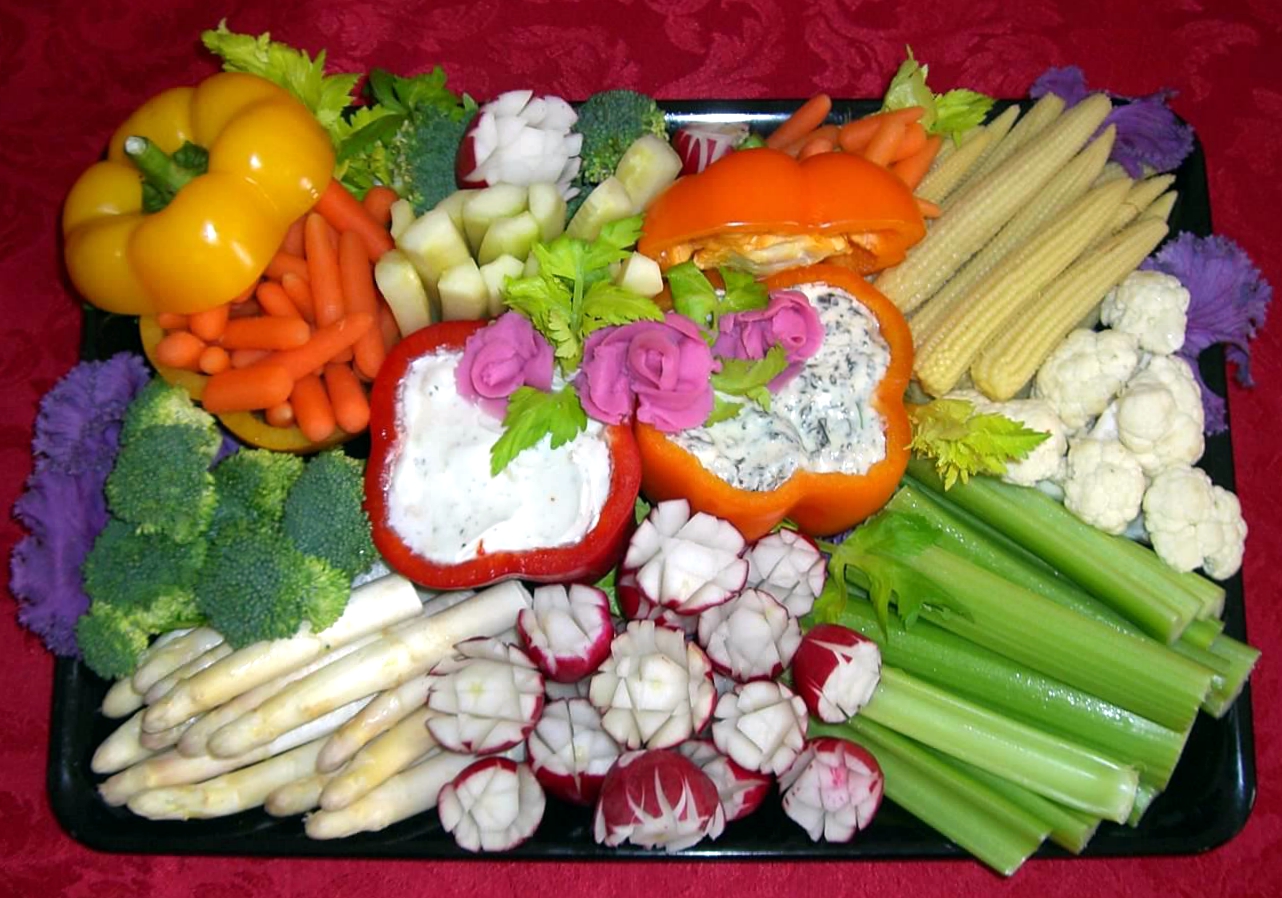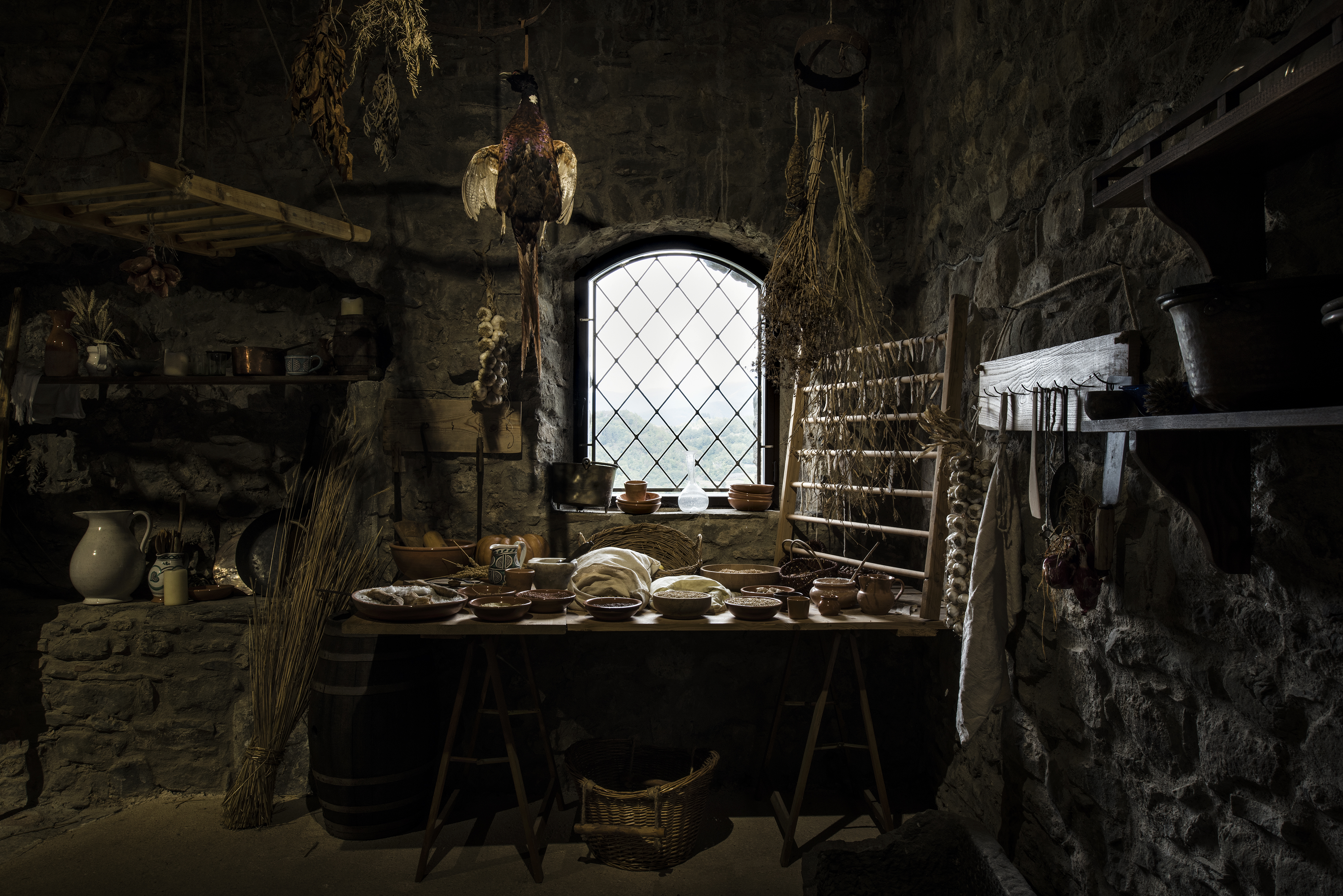|
Appetizer
An hors d'oeuvre ( ; ), appetiser, appetizer or starter is a small dish served before a meal in European cuisine. Some hors d'oeuvres are served cold, others hot. Hors d'oeuvres may be served at the dinner table as a part of the meal, or they may be served before seating, such as at a reception or cocktail party. Formerly, hors d'oeuvres were also served between courses.''Oxford English Dictionary'', First Edition, 189''s.v.'' Typically smaller than a main dish, an hors d'oeuvre is often designed to be eaten by hand. Hors d'oeuvre are typically served at parties as a small "snack" before a main course. Etymology in French literally means 'outside the work', that is "not part of the ordinary set of courses in a meal". In practice, it is a dish which stands on its own as a snack or supports the main course. The French spelling is the same for singular and plural usage. In English, the typographic ligature is usually replaced by the digraph and two plural forms are acce ... [...More Info...] [...Related Items...] OR: [Wikipedia] [Google] [Baidu] |
Mezze
''Meze'' (also spelled ''mezze'' or ''mezé'') (, ) is a selection of small dishes served as appetizers in Eastern Mediterranean cuisines. It is similar to Spanish cuisine, Spanish tapas and Italian cuisine, Italian Antipasto, antipasti. A ''meze'' may be served as a part of a multi-course meal or form a meal in itself. ''Meze'' are often served with spirits such as ''Arak (drink), arak, rakia, Rakı, raki, Oghi (drink), oghi, ouzo,'' or ''grappa'' at meyhane and ouzeri or at regular restaurants. The word meze, used in all the cuisines of the former Ottoman Empire, borrowed from Turkish meze meaning 'appetizer', which in turn had borrowed it from the Persian maze or maza (مَزه) meaning 'taste' or 'relish'. Common dishes In Turkey, ''meze'' often consist of ''beyaz peynir'' 'white cheese', ''kavun'' (sliced ripe melon), ''acılı ezme'' (hot pepper paste often with walnuts), ''haydari'' (thick strained yogurt with herbs), ''patlıcan salatası'' (cold eggplant salad), ' ... [...More Info...] [...Related Items...] OR: [Wikipedia] [Google] [Baidu] |
Smörgåsbord
Smorgasbord or Smörgåsbord (, ) is a buffet-style meal of Swedish origin. It is served with various hot and mainly cold dishes. It assumed its present form in the 19th century, following old traditions. Smörgåsbord became known in the US at the 1939 New York World's Fair when it was offered at the Swedish Pavilion's Three Crowns Restaurant. It is typically a celebratory meal, and guests can help themselves from a range of dishes laid out for their choice. In a restaurant the term refers to a buffet-style table laid out with many small dishes from which, for a fixed amount of money, one is allowed to choose as many as one wishes. A traditional Swedish ''smörgåsbord'' consists of both hot and cold dishes. Bread, butter, and cheese are always part of the ''smörgåsbord''. It is customary to begin with cold fish dishes, which are generally various forms of herring, salmon, and eel. After eating the first portion, people usually continue with the second course (other cold ... [...More Info...] [...Related Items...] OR: [Wikipedia] [Google] [Baidu] |
Zakuski
''Zakuski'' (, ; ) is the term for an assortment of cold hors d'oeuvres, entrées and snacks in Russian food culture. They are considered to be an integral part of any Russian festive meal, as well as often everyday meals. Terminology Originally, the term referred to pies and other sweet delicacies served after a main meal, but now can refer to a light meal before a main meal or a snack, which may also be eaten at a stand-up bar known as ''zakusochnaya''. It is served as a course on its own or "intended to follow each shot of vodka or another alcoholic drink". The word literally means 'little bites'. History The tradition of ''zakuski'' is linked to the Swedish and Finnish '' brännvinsbord'', which was also the ancestor of modern smörgåsbord, and to '' meze'' of the Ottoman Empire and other Middle Eastern cultures. Its origin is generally attributed to Peter I of Russia (), who absorbed many foreign customs during his travels to Western Europe. ''Zakuski'' are not ... [...More Info...] [...Related Items...] OR: [Wikipedia] [Google] [Baidu] |
Meal
A meal is an occasion that takes place at a certain time and includes consumption of food. The English names used for specific meals vary, depending on the speaker's culture, the time of day, or the size of the meal. A meal is different from a snack in that meals are generally larger, more varied, and more filling. Though they can be eaten anywhere, meals usually take place in homes, restaurants, and cafeterias. Regular meals occur on a daily basis, typically several times a day. Special meals are normally held in conjunction with celebratory or momentous occasions such as birthdays, weddings, anniversaries, funerals, and holidays. The type of food that is served or consumed at any given time depends on regional customs. Three main meals are typically eaten in the morning, early afternoon, and evening in most civilizations. Furthermore, the names of meals are often interchangeable by custom as well. Some serve dinner as the main meal at midday, with supper as the late aftern ... [...More Info...] [...Related Items...] OR: [Wikipedia] [Google] [Baidu] |
European Cuisine
European cuisine (also known as Continental cuisine) comprises the cuisines originating from the various countries of Europe. The cuisines of European countries are diverse, although some common characteristics distinguish them from those of other regions.Kwan Shuk-yan (1988). ''Selected Occidental Cookeries and Delicacies'', p. 23. Hong Kong: Food Paradise Pub. Co. Compared to traditional cooking of East Asia, meat holds a more prominent and substantial role in serving size.Lin Ch'ing (1977). ''First Steps to European Cooking'', p. 5. Hong Kong: Wan Li Pub. Co. Many dairy products are utilised in cooking. There are hundreds of varieties of cheese and other fermented milk products. White wheat-flour bread has long been the prestige starch, but historically, most people ate bread, flatcakes, or porridge made from rye, spelt, barley, and oats. Those better-off would also make pasta, dumplings and pastries. The potato has become a major starch plant in the diet of Europeans an ... [...More Info...] [...Related Items...] OR: [Wikipedia] [Google] [Baidu] |
Party
A party is a gathering of people who have been invited by a Hospitality, host for the purposes of socializing, conversation, recreation, or as part of a festival or other commemoration or celebration of a special occasion. A party will often feature food and beverages, and often conversation, music, dancing, or other forms of entertainment. Some parties are held in honor of a specific person, day, or event, such as a birthday party, a Super Bowl party, or a St. Patrick's Day party. Parties of this kind are often called celebrations. A party is not necessarily a private occasion. Public parties are sometimes held in restaurants, Public house, pubs, beer gardens, nightclubs, or Bar (establishment), bars, and people attending such parties may be charged an admission fee by the host. Large parties in public streets may celebrate events such as Mardi Gras or the signing of a peace treaty ending a long war. Types Balls Banquets Birthday party A birthday party is a celeb ... [...More Info...] [...Related Items...] OR: [Wikipedia] [Google] [Baidu] |
Cocktail Party
A cocktail party is a party at which cocktails are served. It is sometimes called a cocktail reception. A cocktail party organized for purposes of social or business networking is called a mixer. Some events, such as wedding receptions, are preceded by a cocktail hour. During the cocktail hour, guests socialize while drinking and eating appetizers. Organizers of these events use the cocktail hour to occupy guests between related events and to reduce the number of guests who arrive late. Although it has been said that the inventor of the cocktail party was Alec Waugh of London, an article in the '' St. Paul Pioneer Press'' in May 1917 credited its invention to Mrs. Julius S. Walsh Jr. of St. Louis, Missouri. Mrs. Walsh invited 50 guests to her house on a Sunday at high noon for a one-hour affair. "The party scored an instant hit," the newspaper declared, stating that within weeks cocktail parties had become "a St. Louis institution". Alec Waugh noted that the first cocktail ... [...More Info...] [...Related Items...] OR: [Wikipedia] [Google] [Baidu] |
Roman Empire
The Roman Empire ruled the Mediterranean and much of Europe, Western Asia and North Africa. The Roman people, Romans conquered most of this during the Roman Republic, Republic, and it was ruled by emperors following Octavian's assumption of effective sole rule in 27 BC. The Western Roman Empire, western empire collapsed in 476 AD, but the Byzantine Empire, eastern empire lasted until the fall of Constantinople in 1453. By 100 BC, the city of Rome had expanded its rule from the Italian peninsula to most of the Mediterranean Sea, Mediterranean and beyond. However, it was severely destabilised by List of Roman civil wars and revolts, civil wars and political conflicts, which culminated in the Wars of Augustus, victory of Octavian over Mark Antony and Cleopatra at the Battle of Actium in 31 BC, and the subsequent conquest of the Ptolemaic Kingdom in Egypt. In 27 BC, the Roman Senate granted Octavian overarching military power () and the new title of ''Augustus (title), Augustus'' ... [...More Info...] [...Related Items...] OR: [Wikipedia] [Google] [Baidu] |





